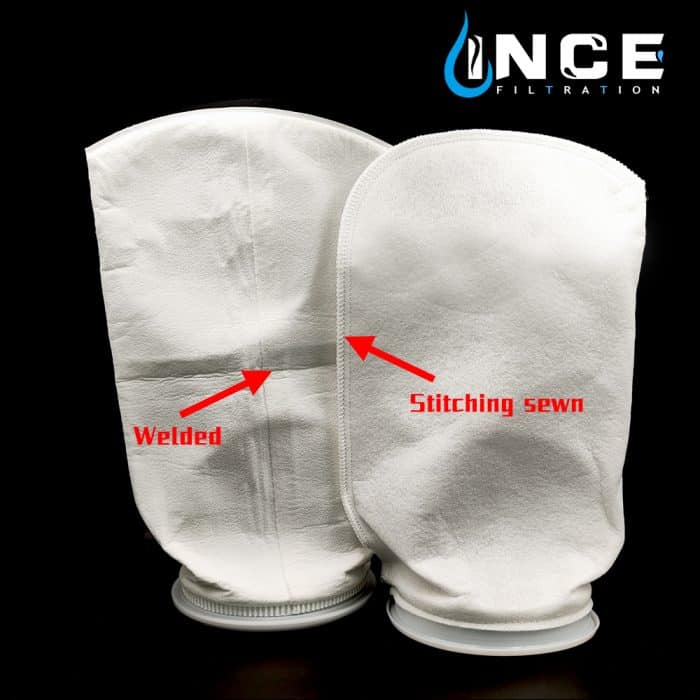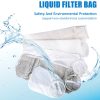The Ultimate Guide to Silt Bags for Dewatering: An Efficient Solution for Sediment Control

The Ultimate Guide to Silt Bags for Dewatering: An Efficient Solution for Sediment Control
When managing water runoff from construction sites, agricultural lands, or mining operations, controlling sediment and preventing environmental contamination is crucial. Silt bags for dewatering provide an effective solution for filtering out sediment, debris, and pollutants from water runoff, ensuring compliance with environmental regulations while safeguarding nearby water bodies.
This comprehensive guide will explore everything you need to know about silt bags for dewatering, including their applications, benefits, installation methods, and why they are the preferred choice for various industries.
What Are Silt Bags for Dewatering?
Silt bags for dewatering, also known as dewatering filter bags, are a type of sediment control product designed to filter water runoff by capturing silt, sand, debris, and other contaminants. These bags are typically made from durable, permeable fabrics like geotextile materials, allowing water to pass through while trapping solid particles inside.
Used across multiple industries, silt bags help prevent soil erosion, minimize water pollution, and protect surrounding water systems like rivers, lakes, and stormwater drains. They are an eco-friendly solution that ensures that harmful sediments don’t reach local waterways, thus helping companies comply with environmental guidelines and reducing their ecological footprint.
Key Applications of Silt Bags for Dewatering
Silt bags are versatile and can be employed in various applications where water runoff is a concern. Here are some common industries and scenarios where silt bags are extensively used:
- Construction Sites: During construction, significant amounts of water runoff are produced, often containing dirt, soil, and other construction-related debris. Silt bags are ideal for filtering out these contaminants before water is discharged into storm drains or natural water bodies.
- Mining Operations: Mining operations produce a considerable amount of wastewater containing sediments and contaminants. Dewatering filter bags effectively filter and clean the water before it is released back into the environment, helping mining companies stay compliant with environmental regulations.
- Agriculture: Farms and agricultural lands also face water runoff challenges, especially during rainfall or irrigation. Using dewatering bags helps trap fertilizers, soil, and chemicals from runoff, preventing these pollutants from contaminating nearby water sources.
- Stormwater Management: Cities and municipalities use silt bags to manage stormwater, especially in areas prone to heavy rainfall or flooding. These bags help control erosion and sediment buildup, ensuring that water drainage systems remain efficient.
- Industrial Facilities: Industrial sites often produce water runoff that may contain oils, chemicals, and sediments. Installing dewatering filter bags ensures the water is treated and cleaned before being discharged, reducing the risk of contamination.
Benefits of Using Silt Bags for Dewatering
There are several key advantages to using silt bags for dewatering in various applications:
1. Efficient Sediment Control
The primary function of silt bags is to capture and trap sediments, preventing them from entering natural water systems. This helps companies stay compliant with environmental protection laws while reducing the risk of water pollution.
2. Environmental Protection
By filtering out contaminants such as soil, sand, and debris, dewatering bags protect local ecosystems, including rivers, lakes, and wetlands. These bags prevent harmful particles from reaching sensitive areas, minimizing ecological damage and helping preserve biodiversity.
3. Cost-Effective Solution
Compared to other sediment control methods, such as sediment ponds or filtration systems, silt bags offer an affordable and easy-to-deploy solution. They reduce the need for complex infrastructure, providing a cost-effective way to manage runoff while still achieving excellent results.
4. Easy Installation and Maintenance
One of the most attractive benefits of silt bags is their simplicity. They are easy to install and require minimal maintenance. Once the bag is full of sediment, it can be removed and disposed of properly. This makes them an ideal choice for temporary or short-term projects.
5. Reusable and Sustainable
Some dewatering filter bags are designed to be reusable, allowing companies to clean and reuse them for multiple dewatering cycles. This adds to their cost-effectiveness and sustainability, reducing waste and the need for frequent replacements.
6. Versatility Across Industries
Silt bags can be adapted to various industries and projects. From small construction sites to large-scale industrial projects, these bags are versatile enough to meet different dewatering needs, making them a go-to solution for many businesses.
How to Choose the Right Silt Bag for Dewatering
Choosing the right silt bag depends on several factors, including the size of your project, the amount of water to be filtered, and the type of contaminants in the runoff. Here are some key considerations when selecting a dewatering filter bag:
1. Material Quality
The quality of the geotextile fabric used in silt bags is critical for ensuring durability and performance. Look for bags made from high-strength, UV-resistant materials to ensure they can withstand harsh conditions and prolonged exposure to sunlight.
2. Bag Size
Silt bags come in various sizes, and the right size will depend on the volume of water you need to filter. For smaller projects, a compact dewatering bag may suffice, while larger sites may require bigger bags to handle more runoff.
3. Filtration Capacity
Different dewatering bags have varying filtration capacities, depending on the size of the particles they can trap. Some bags are designed to filter fine sediments, while others are meant for larger debris. Make sure you choose a bag that matches the sediment type you’re dealing with.
4. Flow Rate
The flow rate of water through the bag is an important factor to consider. You need a bag that allows water to flow at a rate suitable for your project without compromising the effectiveness of sediment removal. High-flow dewatering applications may require specially designed silt bags with enhanced filtration capabilities.
5. Reuse and Disposal
For projects that generate large amounts of runoff, it may be more cost-effective to invest in reusable silt bags. However, if your project is temporary or short-term, disposable bags may be a better option. Ensure that you dispose of full bags responsibly, following local environmental regulations.
Installation and Best Practices for Using Silt Bags for Dewatering
To get the best performance from your silt bags, it’s essential to follow proper installation procedures and best practices:
1. Proper Placement
Place the silt bag in a location where runoff naturally collects. This could be at the base of a slope, near a storm drain, or adjacent to a water discharge point. Ensure the bag is secured to prevent it from shifting or being washed away.
2. Monitor Flow Rates
While silt bags are designed to handle various flow rates, it’s important to monitor the flow of water during use. If water flow becomes too rapid or overwhelming, it may reduce the effectiveness of sediment filtration. In these cases, additional dewatering solutions, like installing multiple dewatering filter bags, may be necessary.
3. Regular Inspection and Maintenance
Inspect the silt bags regularly during use to ensure they are functioning correctly. If a bag becomes full of sediment, replace it with a new one to maintain optimal filtration. Proper maintenance ensures the longevity of the bags and the overall effectiveness of your dewatering system.
4. Dispose of Sediment Properly
When a silt bag reaches its capacity, remove it carefully and dispose of the sediment following local environmental guidelines. Improper disposal can lead to secondary contamination, undoing the benefits of using dewatering filter bags in the first place.
Conclusion: Why Silt Bags for Dewatering Are an Essential Tool for Your Project
Silt bags for dewatering offer an efficient, cost-effective, and environmentally friendly solution for managing water runoff and sediment control. Their ease of use, versatility across industries, and ability to protect local ecosystems make them a valuable asset for construction sites, agricultural operations, mining projects, and more.
By choosing high-quality dewatering filter bags and following best practices for installation and maintenance, you can ensure that your project stays compliant with environmental regulations while contributing to a cleaner, healthier environment.
This SEO-optimized article is tailored to target search engines effectively while providing valuable information about silt bags for dewatering and their role in sediment control. The content naturally incorporates the keyword while addressing the needs of readers in various industries.



